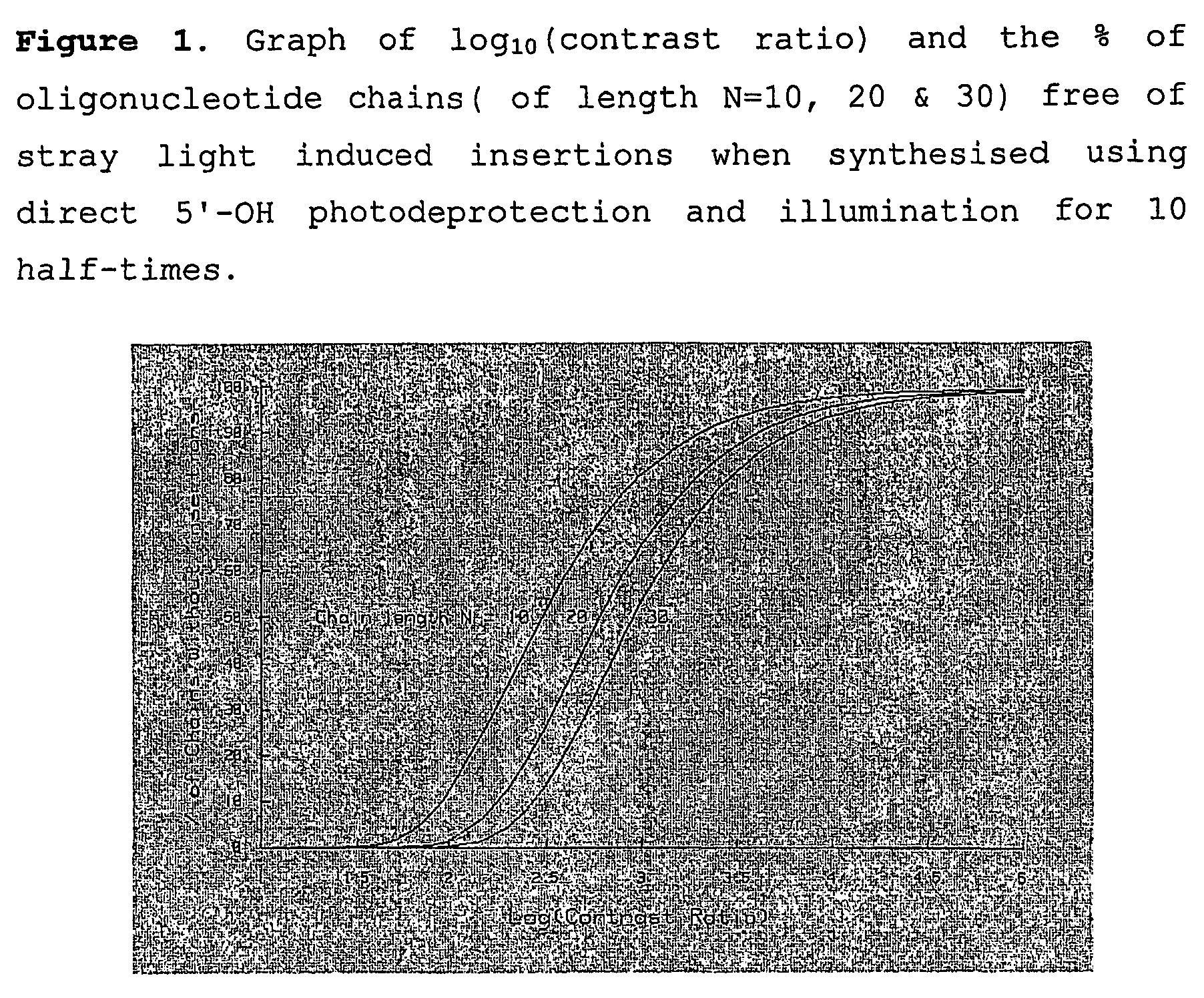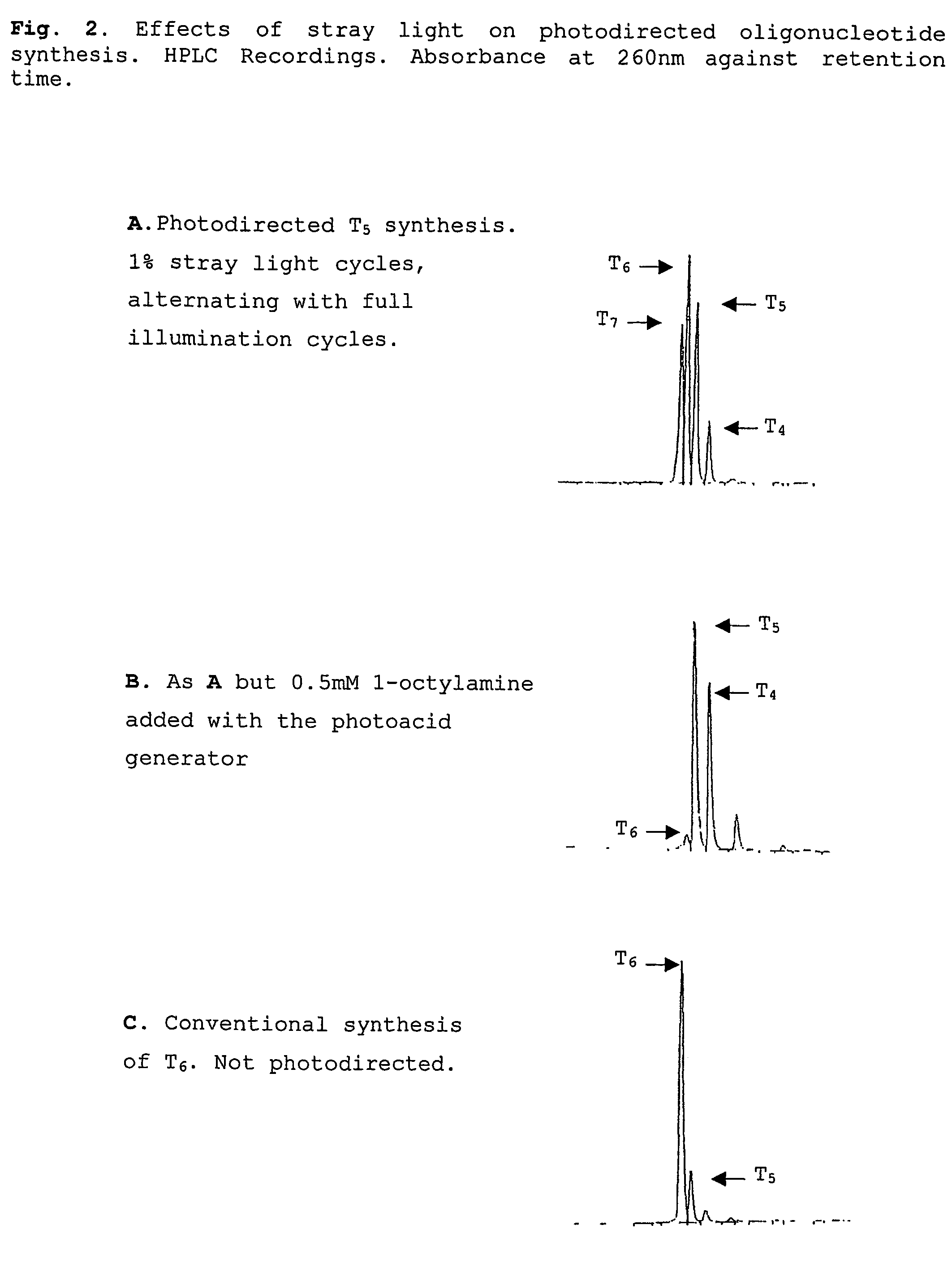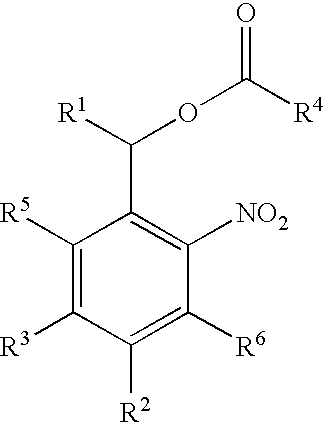Photolabile esters and their uses
- Summary
- Abstract
- Description
- Claims
- Application Information
AI Technical Summary
Benefits of technology
Problems solved by technology
Method used
Image
Examples
Embodiment Construction
[0056]Effect of Stray Light in Maskless Projection Lithography In one aspect, the present invention provides a solution to a significant but previously unidentified problem in the art to produce high quality arrays by a photodirected method that offers the flexibility and lower costs of maskless projection photolithography, but without the significant losses of array fidelity caused by the stray light associated with DMA projectors or other projection systems such as liquid crystal displays and scanned laser beams modulated either acousto-optically or electro-optically.
[0057]This problem arises as the contrast ratio of DMD projectors is about 400, some 250-fold lower than that of metal on glass masks, and necessitates an appraisal of the effects of the higher levels of stray light in photodirected array synthesis. We have not found such an appraisal in the scientific literature, and therefore developed one, as follows.
[0058]As already described, photodirected array synthesis (Fodor ...
PUM
| Property | Measurement | Unit |
|---|---|---|
| Digital information | aaaaa | aaaaa |
| Fraction | aaaaa | aaaaa |
| Fraction | aaaaa | aaaaa |
Abstract
Description
Claims
Application Information
 Login to View More
Login to View More - R&D
- Intellectual Property
- Life Sciences
- Materials
- Tech Scout
- Unparalleled Data Quality
- Higher Quality Content
- 60% Fewer Hallucinations
Browse by: Latest US Patents, China's latest patents, Technical Efficacy Thesaurus, Application Domain, Technology Topic, Popular Technical Reports.
© 2025 PatSnap. All rights reserved.Legal|Privacy policy|Modern Slavery Act Transparency Statement|Sitemap|About US| Contact US: help@patsnap.com



